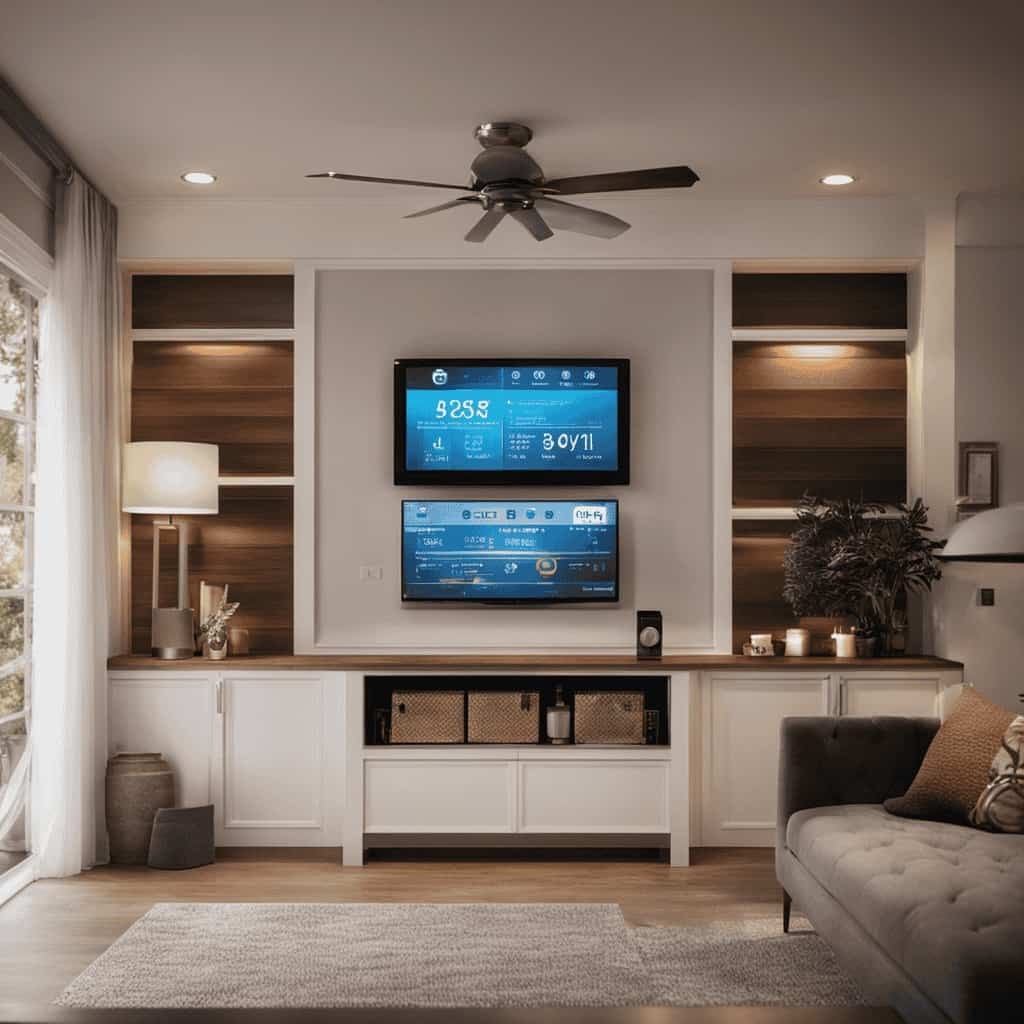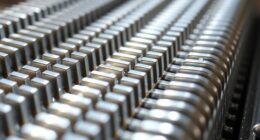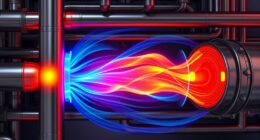Are you fed up with being cold in the winter and facing sky-high heating bills? Your search ends here! We offer the perfect solution to optimize heat pump efficiency in chilly climates.
In this article, we will unveil the secrets to achieving optimal performance and cost savings. From understanding the factors affecting efficiency to choosing the right heat pump, we’ve got you covered.
Get ready to liberate yourself from the cold and embrace a warmer, more efficient future!
Key Takeaways
- Heat pumps offer efficient climate control solutions for homes and buildings in cold climates.
- Proper insulation and choosing the right-sized heat pump system are crucial for optimal performance in low temperatures.
- Regular maintenance, energy-saving strategies, and utilizing programmable thermostats are important for maximizing heat pump efficiency in winter.
- When selecting a heat pump for cold climates, consider factors like size, efficiency, and defrost capabilities.
Benefits of Heat Pumps in Cold Climates
We can experience greater energy savings and increased comfort by using heat pumps in cold climates.
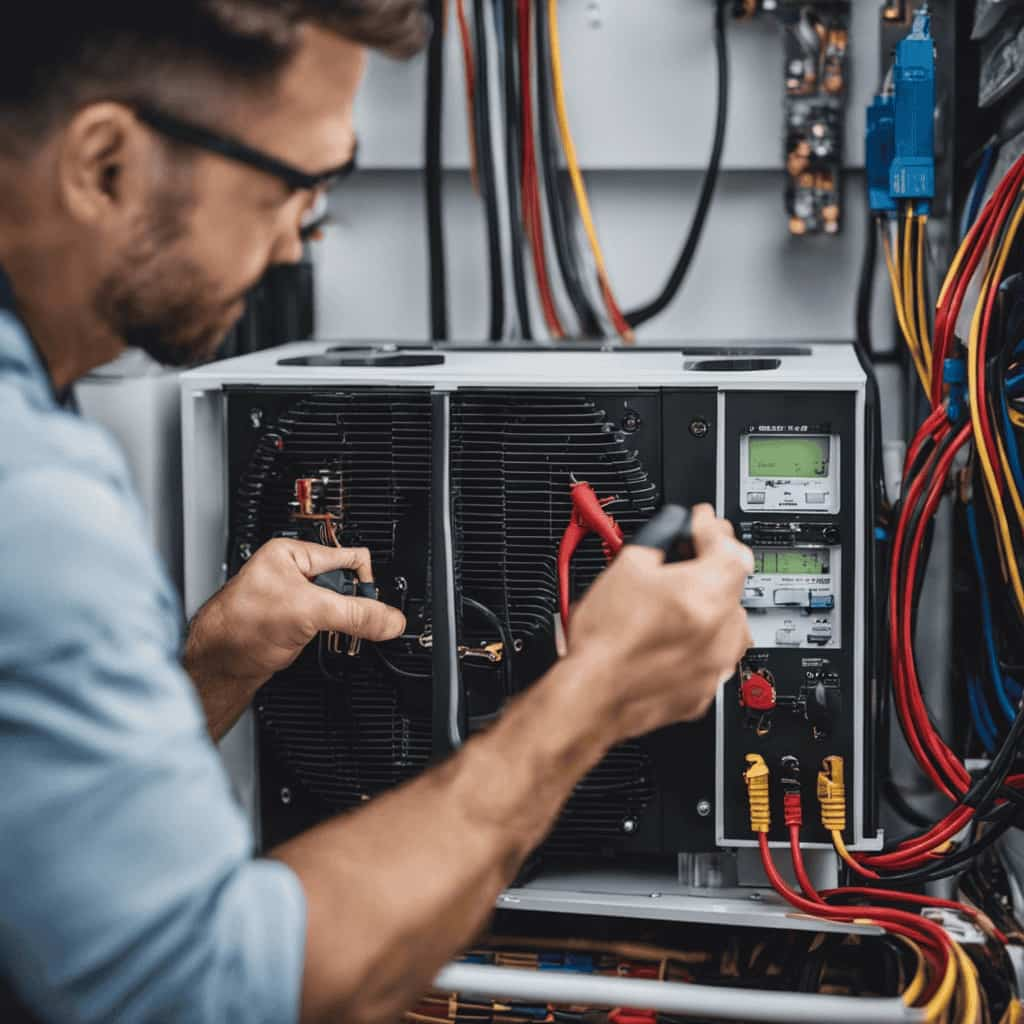
Heat pumps are an advanced energy-saving technology that offers efficient climate control solutions for homes and buildings. Unlike traditional heating systems, heat pumps don’t generate heat; instead, they extract heat from the outside air, even in low temperatures, and transfer it indoors.
This process is based on the principle of refrigeration and is highly efficient, requiring less energy consumption compared to other heating methods. By utilizing heat pumps, we can significantly reduce our energy bills while still enjoying a comfortable indoor environment.
Heat pumps also provide the added benefit of cooling during the summer months, making it a versatile climate control solution for year-round use.
Factors Affecting Heat Pump Efficiency in Low Temperatures
There are several factors that can affect the efficiency of heat pumps in low temperatures, such as outdoor temperature, system size, and insulation levels.

Here are three key factors that impact heat pump efficiency in low temperatures:
-
Thermal insulation requirements: Proper insulation is crucial to minimize heat loss and maintain a comfortable indoor temperature. Insufficient insulation can result in increased energy consumption and reduced heat pump efficiency.
-
Impact of extreme cold on heat pump efficiency: Extremely low temperatures can cause the heat pump to work harder to extract heat from the outdoor air. This can lead to decreased efficiency and higher energy consumption.
-
System size: Choosing the right-sized heat pump system is essential for optimal performance in low temperatures. Undersized systems may struggle to meet the heating demands, while oversized systems may cycle on and off frequently, reducing efficiency.

Considering these factors and ensuring adequate insulation can help maximize heat pump efficiency in low temperatures, promoting energy savings and comfort.
Tips for Optimal Heat Pump Performance in Winter
To ensure optimal heat pump performance in winter, it’s important to follow these tips for maximizing efficiency.
First and foremost, regular heat pump maintenance is crucial. This includes cleaning or replacing air filters, checking and cleaning coils, and inspecting the refrigerant levels. Proper maintenance ensures that the heat pump operates smoothly and efficiently, reducing energy consumption.
Additionally, implementing energy-saving strategies can further enhance performance. For instance, setting the thermostat to a lower temperature when the house is unoccupied can save energy and reduce the workload on the heat pump. Utilizing programmable thermostats can automate this process.
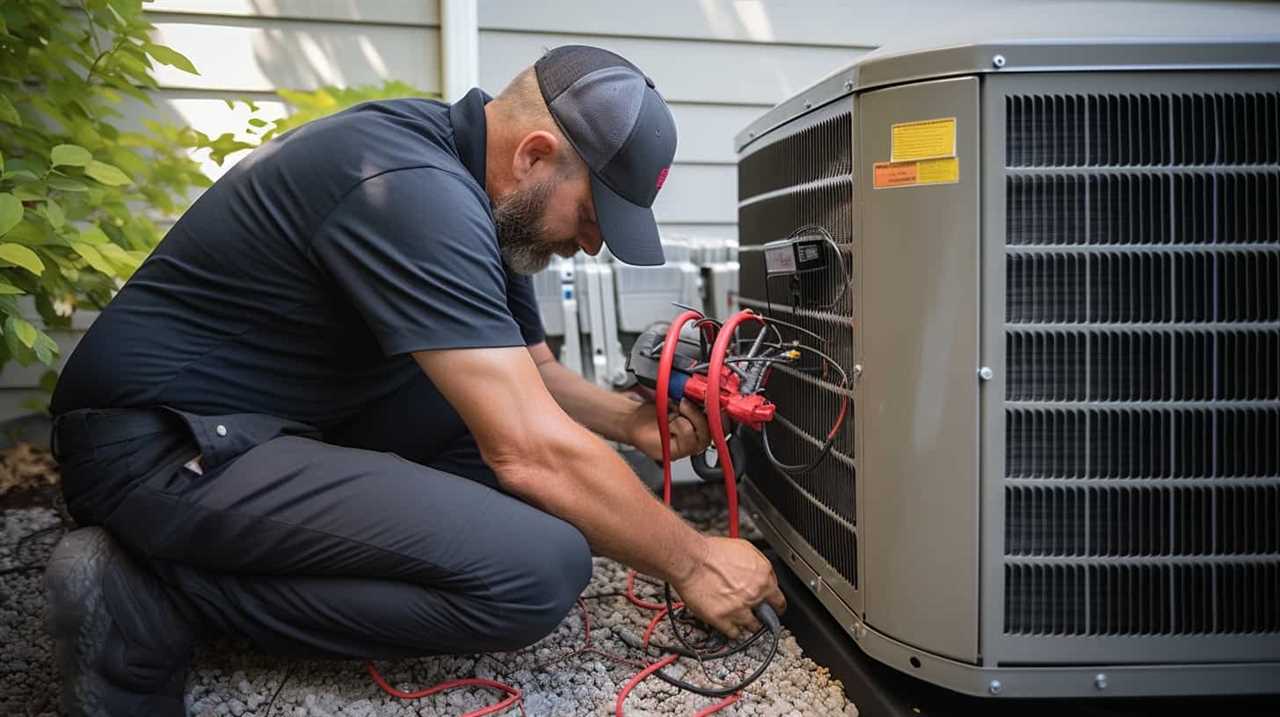
Furthermore, ensuring proper insulation and sealing any air leaks in the house can minimize heat loss and improve heat pump efficiency.
Choosing the Right Heat Pump for Cold Climate Applications
When selecting a heat pump for cold climate applications, it’s important to consider factors such as size, efficiency, and defrost capabilities. Here are three key considerations to keep in mind:
-
Heat Pump Sizing: It’s crucial to choose a heat pump that’s properly sized for your specific heating needs. Undersized units may struggle to provide adequate heating in extreme cold temperatures, while oversized units may cycle on and off frequently, leading to reduced efficiency and increased wear and tear.
-
Efficiency: Look for heat pumps with high Seasonal Energy Efficiency Ratio (SEER) and Heating Seasonal Performance Factor (HSPF) ratings. These ratings indicate the unit’s energy efficiency and its ability to effectively heat your space while minimizing energy consumption.

-
Defrost Capabilities: Cold climates often come with frost and ice buildup on the heat pump’s outdoor unit. Opt for a heat pump with advanced defrost capabilities, such as demand-defrost control or hot gas defrost, to ensure efficient operation even in freezing conditions.
Choosing a heat pump that’s properly sized, energy-efficient, and equipped with effective defrost capabilities won’t only provide optimal comfort but also result in significant energy savings.
In the next section, we’ll explore maintenance and troubleshooting tips to ensure the long-term performance of your cold climate heat pump.
Maintenance and Troubleshooting Tips for Cold Climate Heat Pumps
For proper maintenance and troubleshooting of our cold climate heat pumps, we can follow these tips.
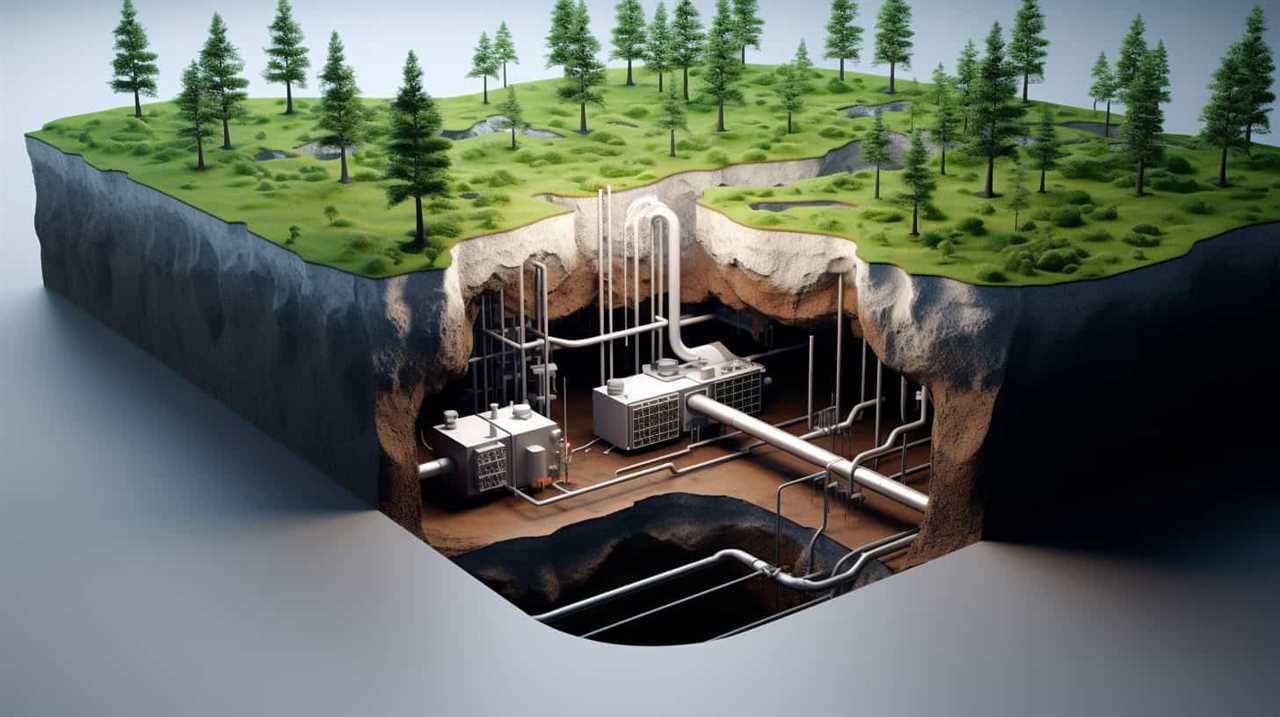
Regular maintenance is crucial to ensure optimal performance and efficiency. Start by cleaning or replacing the air filters every one to three months, as dirty filters can restrict airflow and reduce efficiency.
Additionally, inspect the outdoor unit regularly and remove any debris that may be obstructing the airflow. Lubricate the motor and fan bearings annually to reduce friction and extend their lifespan.
Check the refrigerant levels regularly and recharge if necessary. It’s also important to clean the coils and fins to prevent dirt and debris buildup.
Common issues with cold climate heat pumps include frozen coils, which can be resolved by defrosting the unit, and faulty thermostats, which may require recalibration or replacement.
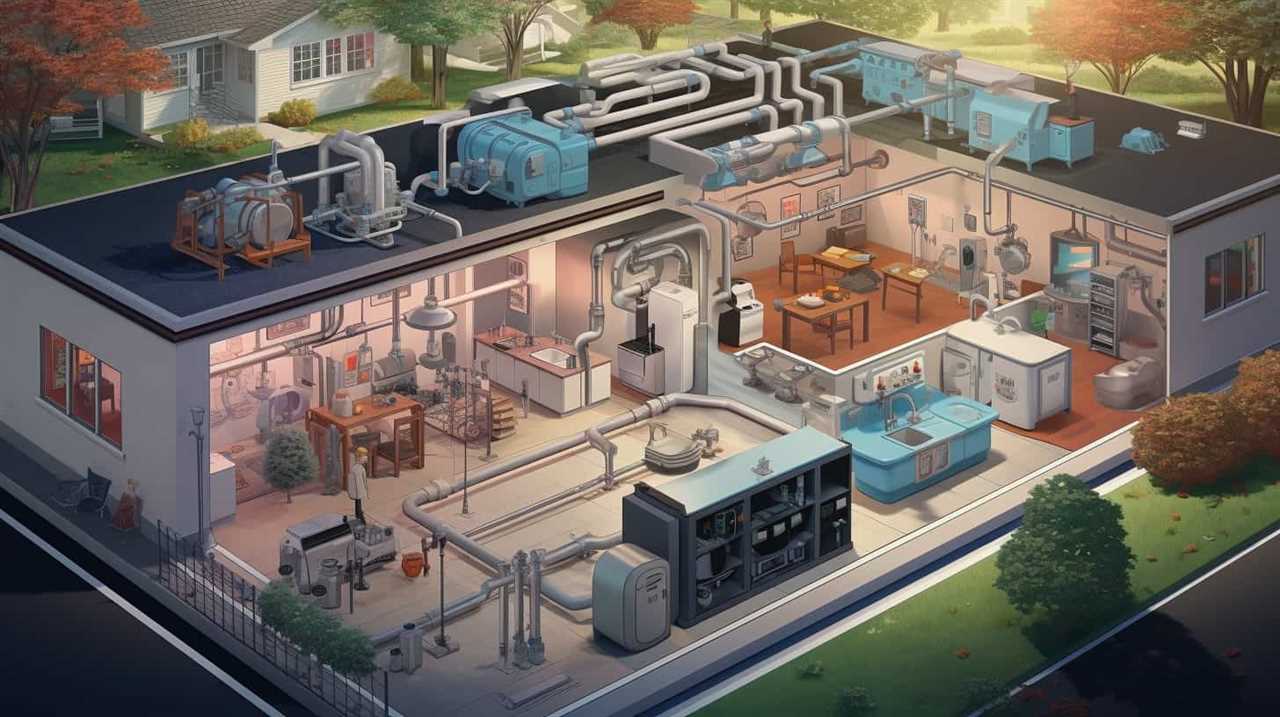
Frequently Asked Questions
Are Heat Pumps Suitable for Extremely Cold Climates With Temperatures Below Freezing?
Yes, heat pumps can be suitable for extremely cold climates with temperatures below freezing. However, there are challenges to consider, such as reduced efficiency and the need for supplemental heating in order to maintain optimal performance.
Can a Heat Pump Be Used as the Sole Heating Source in a Cold Climate?
Yes, a heat pump can be used as the sole heating source in a cold climate. By maximizing heat pump efficiency, we can reap the benefits of using it in cold climates, ensuring effective and energy-efficient heating.
What Is the Average Lifespan of a Heat Pump in a Cold Climate?
The average lifespan of a heat pump in a cold climate is typically around 15 to 20 years. However, it’s important to consider the suitability of the heat pump for cold climates to ensure optimal performance and longevity.
Are There Any Government Incentives or Rebates Available for Installing a Heat Pump in a Cold Climate?
Yes, there are government incentives and rebates available for installing a heat pump in a cold climate. These programs aim to promote energy efficiency and reduce carbon emissions in residential heating systems.
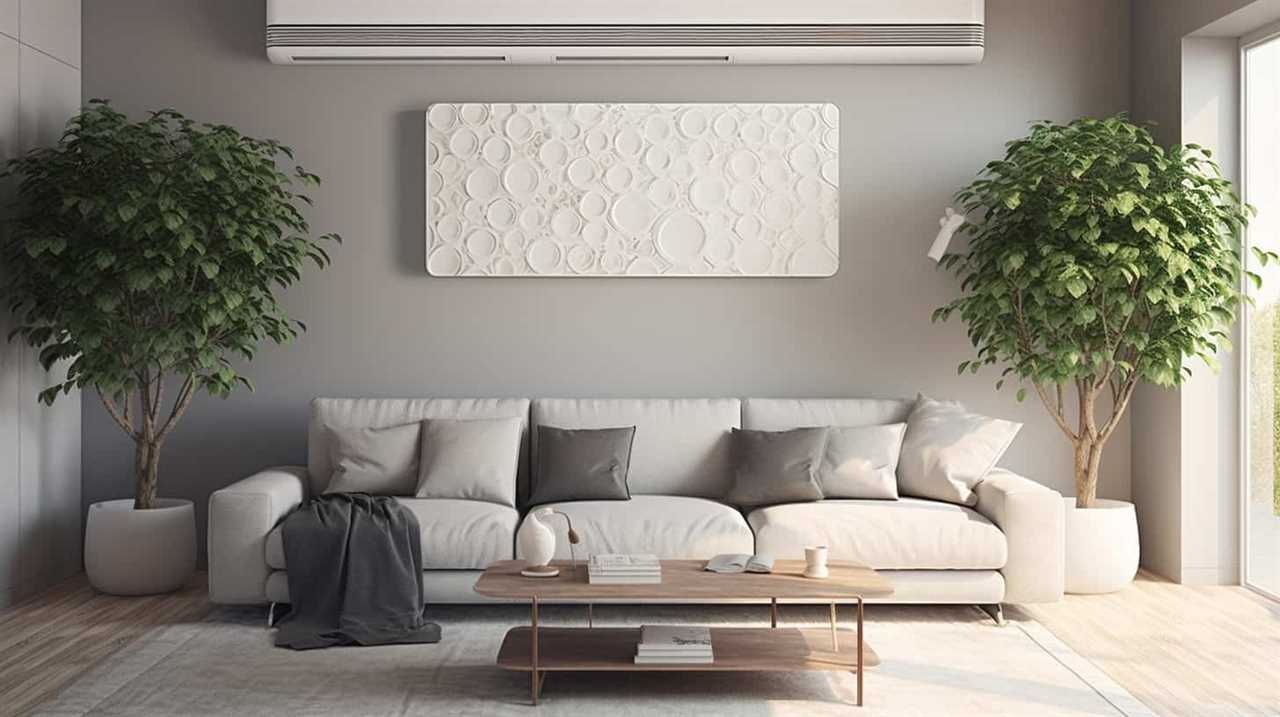
How Does the Efficiency of a Heat Pump Compare to Other Heating Systems in Cold Climates?
When comparing heat pump efficiency to traditional heating systems in cold climates, we must consider maximizing heat pump performance in frigid temperatures. This requires a technical, precise, and analytical approach to ensure liberation from inefficient heating methods.
Conclusion
In conclusion, maximizing heat pump efficiency in cold climates is crucial for optimal performance and cost savings. By considering factors such as insulation, size, and maintenance, homeowners can ensure their heat pumps operate at peak efficiency throughout the winter months.
Additionally, choosing the right heat pump for cold climate applications is essential for reliable and efficient heating. Remember, a stitch in time saves nine, so investing in proper maintenance and troubleshooting can prevent costly repairs down the road.


